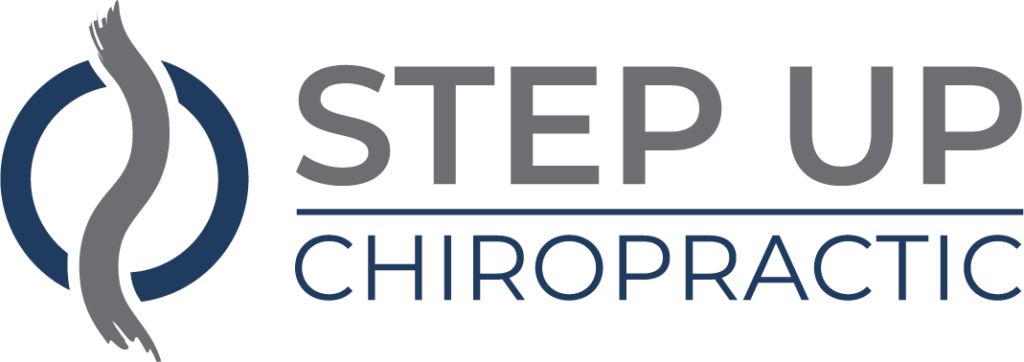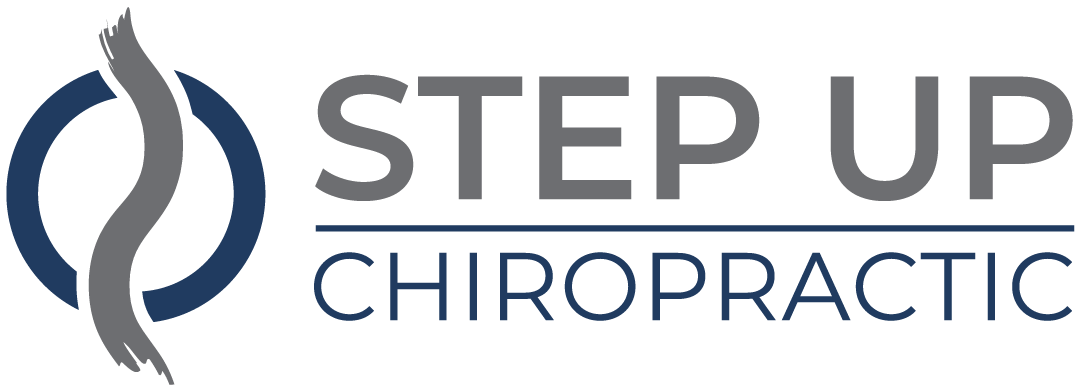When life throws challenges your way, how you respond can make all the difference. You might feel like snapping under pressure, but what if you could stretch instead? Embracing a flexible mindset and viewing obstacles as growth opportunities could transform your approach to stress. It's not just about surviving tough times; it's about enhancing your well-being and building resilience. But how exactly can you cultivate this mindset and maintain your emotional strength? The answers might surprise you and could change the way you face adversity.
Understanding Resilience
Resilience is the cornerstone of bouncing back from life's challenges. It's that inner strength that helps you face adversity head-on, allowing you to recover and grow rather than crumble under pressure. You might wonder what sets resilient individuals apart. They don't shy away from difficulties; instead, they embrace them as opportunities for growth.
When you encounter setbacks, think of resilience as your mental toolkit. You can cultivate a positive mindset, adapt to changing circumstances, and maintain a sense of purpose even when times get tough. It's about understanding that failure isn't the end; rather, it's a stepping stone on your journey.
Recognizing your emotions plays a significant role in building resilience. When you face a challenge, allow yourself to feel what you're feeling—whether it's disappointment, frustration, or fear. Acknowledging these emotions is the first step in overcoming them.
Once you've processed your feelings, you can shift your focus to solutions rather than problems. Surrounding yourself with a supportive network is another essential aspect of resilience. Friends, family, or mentors can provide the encouragement and perspective you need during challenging times.
Share your experiences and lean on them when you need a boost. Ultimately, resilience isn't just about bouncing back; it's about bouncing forward. Each challenge you face can teach you valuable lessons, helping you build a stronger, more adaptable self.
Embrace resilience, and you'll find yourself better equipped to handle whatever life throws your way.
The Power of Flexibility
Flexibility isn't just about physical movement; it's a key component of your overall well-being.
By incorporating regular stretching into your routine, you can release a range of benefits that boost both your body and mind.
Let's explore some effective techniques and simple ways to make stretching a daily habit.
Benefits of Stretching
Many athletes and fitness enthusiasts discover that stretching offers a myriad of benefits that go beyond mere muscle relaxation. By incorporating stretching into your routine, you can enhance your overall performance and reduce the risk of injuries. Improved flexibility allows your muscles and joints to move through a greater range of motion, which can lead to better athletic performance and efficiency in your workouts.
Stretching also promotes blood circulation, delivering essential nutrients and oxygen to your muscles. This improved circulation can aid in recovery and help alleviate soreness after intense training sessions. Additionally, stretching can boost your mental focus and clarity, allowing you to better concentrate on your goals and techniques.
Consider the stress-relieving benefits as well; stretching releases tension in your muscles, helping you feel more relaxed and centered. When you take time to stretch, you're not just investing in your physical health but also in your mental well-being.
Incorporating a variety of stretches into your routine fosters a holistic approach to fitness, supporting both your body and mind.
Techniques for Flexibility
Releasing your body's full potential starts with mastering a few key techniques for flexibility. First, focus on static stretching. Hold each stretch for 15 to 30 seconds, allowing your muscles to relax and lengthen. This method works wonders after workouts, helping to prevent stiffness and improve your range of motion.
Next, try dynamic stretching. This involves moving parts of your body through their full range of motion in a controlled manner. Incorporate movements like leg swings and arm circles to warm up your muscles, enhancing blood flow and preparing your body for activity.
Don't overlook the importance of breath. Deep, controlled breathing while stretching can help you relax, allowing your muscles to yield more easily. When you breathe in, think about expanding your body, and as you exhale, sink deeper into the stretch.
Finally, consider integrating yoga into your routine. Yoga combines stretching with strength and balance, promoting overall flexibility. It encourages mindfulness, helping you connect with your body and recognize its limits while gradually pushing beyond them.
Incorporating Stretching Daily
Incorporating stretching into your daily routine can transform your overall well-being. By committing just a few minutes each day to stretch, you'll notice improvements in flexibility, reduced muscle tension, and enhanced mobility.
It doesn't have to be complicated—consistency is key.
Here are three simple ways to incorporate stretching into your day:
- Morning Routine: Start your day with a 5-minute stretch session. Focus on areas that feel tight, like your back, neck, and legs. This will wake up your body and prepare you for the day ahead.
- Work Breaks: Set a timer to remind yourself to take stretching breaks throughout the day. Every hour, take just a minute to stretch your arms overhead or twist gently from side to side to relieve tension.
- Evening Wind Down: Before bed, dedicate time to relax with gentle stretches. This helps calm your mind and prepares your body for a restful night's sleep.
Techniques for Stress Management
Stress management techniques are essential tools that can help you maintain balance in your life. By incorporating effective strategies, you can navigate challenges more smoothly and enhance your overall well-being.
One of the simplest techniques is deep breathing. When you feel overwhelmed, take a moment to focus on your breath. Inhale deeply through your nose, hold for a few seconds, and exhale slowly through your mouth. This practice calms your mind and lowers your stress levels.
Another effective method is mindfulness meditation. Set aside a few minutes each day to sit quietly, close your eyes, and concentrate on the present moment. Acknowledge your thoughts without judgment and let them pass. This practice can greatly reduce anxiety and improve your focus.
Physical activity is also a powerful stress reliever. Whether it's a brisk walk, yoga, or dancing, moving your body releases endorphins, which help elevate your mood. Find an activity you enjoy and make it a regular part of your routine.
Additionally, prioritize time management. Break tasks into smaller, manageable steps, and set realistic deadlines. This approach can help you feel more in control and reduce stress.
Lastly, don't underestimate the power of laughter. Engaging with humor—whether through funny videos, a comedy show, or spending time with friends—can lighten your mood and alleviate stress.
Building a Support Network
While steering through life's ups and downs, building a support network can make all the difference in managing stress and enhancing your well-being.
Having people around you who understand your struggles can provide comfort, perspective, and practical help. It's important to cultivate relationships that foster positivity and support, and you can start building your network today.
Here are three steps to help you create a solid support system:
- Identify Your Supporters: Think about the people in your life who uplift you. These could be friends, family members, coworkers, or mentors. Reach out to those who listen without judgment and encourage your growth.
- Engage Regularly: Stay connected with your supporters. Schedule regular catch-ups, whether through phone calls, video chats, or in-person meetings. This consistent engagement not only strengthens your bond but also guarantees you have a reliable outlet for discussing your challenges.
- Be Open and Honest: Don't hesitate to share your feelings and experiences. Vulnerability can deepen your connections and allow others to relate to your situation. Being open invites your supporters to share their own stories, creating a reciprocal support dynamic.
Mindfulness and Mental Clarity
Mindfulness can be a powerful tool for enhancing mental clarity and overall well-being. By practicing mindfulness, you train your mind to focus on the present moment, reducing distractions and mental clutter. This heightened awareness helps you gain insights into your thoughts and emotions, leading to clearer decision-making and improved emotional regulation.
When you're mindful, you start noticing when your mind wanders or when stress begins to creep in. Instead of reacting impulsively, you can pause, take a deep breath, and assess the situation more calmly. This practice not only sharpens your focus but also fosters resilience, allowing you to cope better with challenges.
Incorporating mindfulness into your daily routine doesn't have to be time-consuming. Simple practices, like dedicating a few minutes each day to meditation or mindful breathing, can greatly impact your mental clarity. You can also integrate mindfulness into everyday activities, such as eating or walking, by paying full attention to the experience.
Moreover, mindfulness encourages self-compassion. By being aware of your thoughts and feelings without judgment, you cultivate a kinder attitude towards yourself, which can reduce anxiety and increase self-esteem. This shift in mindset contributes to a clearer, more positive outlook on life.
Setting Realistic Goals
Achieving mental clarity through mindfulness sets the stage for effective goal-setting. When you're clear about your thoughts and feelings, it's easier to pinpoint what you genuinely want to achieve.
Setting realistic goals is essential for maintaining motivation and avoiding burnout. Here's how you can guarantee your goals are achievable:
- Be Specific: Instead of saying, "I want to get fit," specify what that means for you. Is it running a 5K, lifting a certain weight, or attending yoga classes twice a week? The clearer you are, the more focused your efforts will be.
- Break It Down: Large goals can feel overwhelming, and that's where many people falter. Break your main goal into smaller, manageable steps. For example, if you aim to read 12 books in a year, commit to reading one book a month. Each small accomplishment will motivate you to continue.
- Set a Timeline: Without a deadline, goals can linger indefinitely. Establish a timeline for each step. This not only keeps you accountable but also guarantees you regularly assess your progress and make adjustments if necessary.
Embracing Change and Adaptability
Embracing change is all about shifting your perspective and being open to new ideas.
When you're flexible in your decision-making, you can adapt more easily to unexpected challenges.
Overcoming resistance to change isn't just essential; it can also lead to growth and new opportunities you mightn't have considered before.
Embracing New Perspectives
Change is an inevitable part of life, and adapting to it can often feel intimidating. However, embracing new perspectives can transform your approach to challenges. When you open your mind to fresh ideas, you allow yourself to grow and thrive in any situation.
Here are three ways to embrace new perspectives:
- Seek Diverse Opinions: Surround yourself with people who think differently. Engaging in conversations with them can spark creativity and help you see things from angles you hadn't considered.
- Challenge Your Assumptions: Regularly question your beliefs and the status quo. By doing so, you'll uncover hidden biases and expand your understanding of the world around you.
- Experiment and Reflect: Try new strategies in your daily life, whether in work or personal projects. Reflect on these experiences to gain insights, helping you adjust your perspective and approach in the future.
Embracing new perspectives doesn't just prepare you for change; it empowers you to face it with confidence.
Flexibility in Decision Making
Often, the ability to pivot in decision-making is what separates those who thrive from those who struggle during times of uncertainty. When you embrace flexibility, you open yourself up to new opportunities and solutions that you might've overlooked.
Remember, adaptability isn't just about changing your plans; it's about being willing to reassess your situation and consider alternative paths.
When faced with unexpected challenges, you can't cling to rigid strategies. Instead, assess the situation clearly, gather relevant data, and be ready to shift your approach. This means trusting your instincts while also being receptive to feedback and suggestions from others.
Collaboration can lead to insights that you mightn't have considered alone.
Being flexible in your decision-making allows you to respond to changing circumstances effectively. It empowers you to take calculated risks and experiment with new ideas.
Embrace the mindset that change isn't a threat but an opportunity for growth. By staying open to different outcomes, you can navigate uncertainty with confidence and resilience, ensuring you remain engaged and proactive rather than reactive.
Overcoming Resistance to Change
Resistance to change is a natural human reaction, but it's one that can hinder progress and growth. You might feel uncomfortable when faced with new ideas or processes, but embracing change is essential for success.
To overcome this resistance, consider these strategies:
- Acknowledge Your Feelings: Recognize that it's okay to feel apprehensive. Accepting your emotions can help you process them and move forward more effectively.
- Focus on the Benefits: Shift your mindset by concentrating on the positive outcomes of change. How will it improve your work or personal life? Understanding the advantages can motivate you to adapt.
- Take Small Steps: Instead of diving headfirst into change, break it down into manageable tasks. Small victories can build your confidence and make the shift feel less intimidating.
Long-term Strategies for Well-being
When it comes to maintaining your well-being over the long haul, adopting a proactive approach can make all the difference. Start by establishing healthy habits that fit seamlessly into your daily routine. Incorporate regular physical activity, even if it's just a brisk walk or a short workout at home. This not only boosts your mood but also strengthens your body for the long term.
Next, prioritize your mental health. Practice mindfulness or meditation to center yourself amidst life's chaos. Set aside time each day to reflect on what you're grateful for; this simple act can shift your perspective and enhance your overall happiness.
Don't underestimate the power of social connections. Surround yourself with supportive friends and family who uplift you. Regularly engage in meaningful conversations and activities with them, as these relationships provide emotional support and contribute to a sense of belonging.
Moreover, nourish your body with balanced meals. Focus on whole foods, incorporating plenty of fruits, vegetables, and lean proteins. Staying hydrated and getting enough sleep are also essential for sustaining your energy levels and mental clarity.
Lastly, set realistic goals for yourself. Break them down into manageable steps and celebrate your progress along the way. This not only keeps you motivated but also instills a sense of accomplishment.
Conclusion
In life's game, remember to stretch instead of snapping. By embracing resilience and flexibility, you can turn challenges into growth opportunities. Use stress management techniques, build a supportive network, and practice mindfulness to maintain clarity. Set realistic goals and stay adaptable to navigate change with ease. Prioritize your well-being with long-term strategies, and you'll not only survive but thrive. So, keep stretching—you're capable of more than you think!




